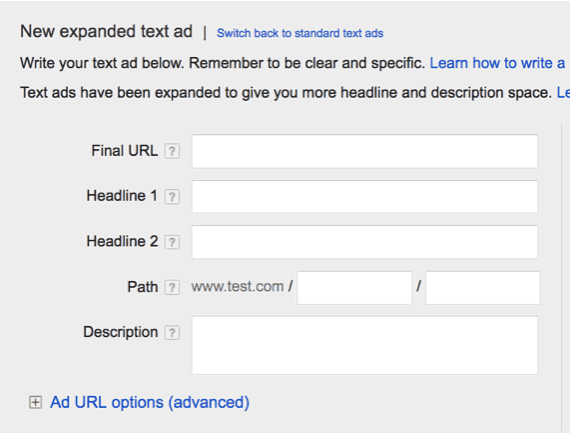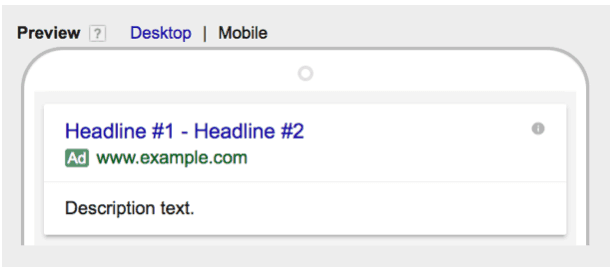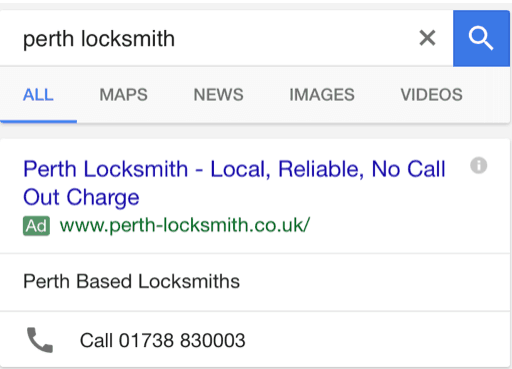Best Practices For Expanded Text Ads in AdWords
AdWords is an incredibly effective advertising platform. Chances are that your target audience is searching for keywords that are relevant to your products or services. A campaign on AdWords can drive a considerable amount of traffic to your landing pages.
The only downside is working with the character limitations when creating new ads. This means having to communicate your unique selling proposition to potential prospects in only a few lines of text.
Certainly not an easy task.
But advertisers now have more room to work with. Google has recently announced major changes to how ads are displayed in the search results. Expanded text ads now give advertisers more space to write ad copy compared to standard text ads.

Other key differences include:
- Two headline fields instead of one: Previously, ads were only limited to one headline. But now there is an additional headline field (separated by a hyphen) which gives you up to 30 characters for both. Headlines may wrap to the second line.
- Two description lines merged into one field: Another big change is that expanded text ads now have one description line with up to 80 characters. This makes it even easier to create better ad copy.
- Domain of the display URL is based on the final URL: Now there is no need to enter a display URL as Google will take the final URL and display it in the ad. But there are two optional Path fields you can enter (e.g. www.example.com/outdoor/running/shoes).
- Optimised for mobile devices: Expanded text ads are now optimised for mobile devices. You can view a preview of how your ads would look like on desktop and mobile devices when creating a new ad.
Here is a sample ad directly from AdWords:

And here is what the new interface looks like:

Expanded text ads are already live so you don’t need to do anything to start using them. Before getting started though, here are best practices to follow to create a high converting campaign.
1. Let Your Old Ads Continue Running
Expanded text ads are available to all advertisers.
But don’t pause your old campaigns just yet.
Even with more space to write additional copy, there is no guarantee that it will result in higher click through rates. In fact, it could have the opposite effect and result in lower click through rates. A better approach is to create new ads with the expanded text ads and run them together with your old ads.
Be sure to allow for enough time to pass to collect sufficient data. Then you can measure how the new ads compare to the old ones. You should only pause the previous campaigns once your new ones perform better.
2. Rewrite Your Headlines For Each Ad
You have an AdWords campaign already running.
And it might even be generating sales for you.
But with expanded text ads you have more of an opportunity to engage potential prospects. Create entirely new ads in your campaigns to take advantage of the additional space. With the second headline, expand on your offer and include a value proposition.
Here is an example of an ad that uses the second headline to appeals to prospects:

Headlines can make or break your ads. So really think about how your business helps customers and communicate this in your ad to drive more traffic to your landing pages.
3. Write Your Copy For All Devices
By default ads are eligible to display on all devices.
So a search query from a desktop or mobile device can trigger your ads in the search results. Keep this in mind when crafting the copy for your ads. Most mobile users are typically searching on the go so your copy needs to be short and to the point. Include a call to action (e.g. Call to make a booking now) to get searchers to act on your offer.
When creating a new ad, you can preview how it will look like on desktop and mobile devices.

More people than ever before are searching from mobile devices. So make sure that your site is mobile-friendly as nothing hurts conversions more than a poorly optimised site.
4. Include Your Target Keywords
Include specific keywords in your headline or description.
Any keywords you include that also happen to be part of a search query will be bolded. Here is an example ad for a search for “airport car service Sydney”.

The bolded text helps your ad stand out. A text ad that reflects exactly what a searcher is looking for is also far more likely to be clicked on. Both are proven to increase click through rates so include target keywords within your ad copy for maximum exposure.
5. Add or Update Ad Extensions
Ad extensions add more functions to your ads.
They also give your ads more prominence in the search results as they provide more ways for users to interact with your ad. Extensions can improve your click through rate and provide more value to your campaign.
Here is an example of a mobile ad with the call extension:

Mobile users can tap on the phone number and call the business directly for more information.
Here is another ad with the site link extension:

Users can click on the exact link they are looking for.
Other ad extensions include displaying a location and showcasing reviews. The best part is that there is no cost to include these in your campaigns. However, you will still be charged for clicks and for any interactions that searchers take on your ad. Note that all extensions go through an approval process so you may need to wait before they go live.
Follow these best practices to get the most out of extended text ads for your AdWords campaigns.
